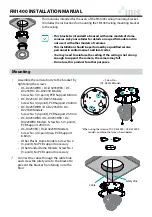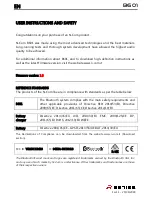
Speedkid 2020
Subject to change without notice. – 07|2020 –
21
Setting the wheel so that it turns freely (Buggy mode)
It must be possible for the wheel to move freely through 360 ° in order to manoeuvre in Buggy mode.
»
Push up the mode switch to release the wheel.
Securing the wheel (Walker mode)
In Walker mode, the wheel must not be at an angle to the direction of travel. You must lock the
wheel to run straight ahead in order to prevent abrupt blocking.
»
Push down the mode switch to make sure the wheel is running straight.
»
Turn the positioned wheel backwards until it engages audibly.
Insert tow bar
The tow bar can either be brought forward into the attachment position or carried along backwards
in the standby position: Pay attention also to the instructions in the chapter
„Mounting the tow bar“
on page 16
.
Danger!
Wrap the retaining strap of the tow bar around the tow bar several times to ensure
it does not hang down in the standby position. Otherwise it could become trapped
on obstacles.
Using the pennant
The pennant must be attached in Trailer mode, see
„Inserting the pennant“ on page 15
. For
safety reasons, we also recommend this for the other modes.
Attaching the hand strap
In Buggy and Walker mode, the hand strap secured to the push handle must be attached to
your wrist during every journey.
Putting on the 5-point safety harness
In every mode, the 5-point safety harnesses must be properly adjusted and every child must be
fastened in, see
„Middle sitting position (Speedkid2)“ on page 23
.
Securing the load
Loading the storage space
»
To open, grab the storage cover with both hands.
»
Pull the elastic band of the storage cover until it can be opened upwards over the frame.
»
Place larger items such as bags, toys or jackets in the storage. If necessary, use the extra
cup holder.
»
To close, stretch the storage cover over the frame again.
Using the beverage holders
»
Put the children’s drinking bottles into the beverage holders in the cabin’s foot space.
Danger!
When loading, pay attention to the total permissible weight and the weight limits,
see
„Performance limits“ on page 4
.
Utilisation
















































